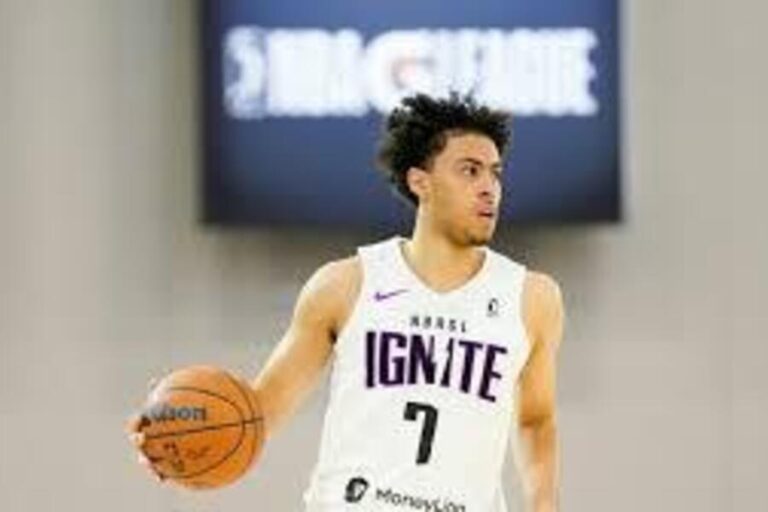The Indiana Pacers, currently battling in the 2025 NBA Finals against the Oklahoma City Thunder, are not only focused on the present but also making bold moves to shape their future. On Tuesday, the organization confirmed a pivotal trade with the New Orleans Pelicans: the Pacers have reacquired their original 2026 first-round NBA Draft pick in exchange for their 2025 first-round selection (No. 23 overall) and the draft rights to international guard Mojave King.
This move is as much about long-term strategy as it is about immediate sacrifice. Though it means Indiana will go without a first-round pick for a second consecutive year, the reacquisition of their 2026 first-rounder restores a significant asset that could play a crucial role in the team’s future planning—either as a developmental draft pick or as a valuable piece in future trade negotiations.
The history of the 2026 pick is already extensive. It was initially sent to the Toronto Raptors in January 2024 in the trade that brought All-Star forward Pascal Siakam to the Pacers. That deal proved to be a game-changer, bolstering Indiana’s roster and contributing to their deep playoff run. However, Toronto didn’t keep the pick long. They sent it to New Orleans in a trade for Brandon Ingram, further complicating the pick’s trajectory. With this latest transaction, the pick has completed a full circle, landing back with the franchise that originally owned it.
The timing of the move raises eyebrows—not because it’s ill-advised, but because it reflects how proactive and forward-thinking Indiana’s front office has become. Many franchises might refrain from making any roster changes while contending for a title, but the Pacers are managing both windows simultaneously: the current pursuit of an NBA championship and the preservation of long-term draft capital.
Trading away the No. 23 pick in this year’s draft, as well as the rights to Mojave King, is a calculated decision. King, a guard from New Zealand who was raised in Australia, was selected 47th overall by the Los Angeles Lakers in the 2023 NBA Draft. Though he has not yet appeared in an NBA game, King has continued to develop overseas, showing promise but also remaining unproven at the league level. His draft rights have now been moved to New Orleans, where he could either be developed further or used as a trade asset down the line.
For Indiana, parting with King and a mid-to-late first-round pick might seem like a step back on paper, but the franchise appears to be betting that the reacquired 2026 pick will either yield a higher-value prospect or give them critical flexibility. Holding onto your future first-round pick is often crucial in orchestrating major trades or rebuilding efforts, especially in a league where draft capital is as valuable as ever.
In the short term, however, this trade means the Pacers will enter the 2025 NBA Draft with only one selection: the 54th overall pick in the second round. While the second round often doesn’t produce stars at the same rate as the first, it has become a space where sharp front offices can still find talent, especially in a deep draft year.
The absence of a first-round pick may not sting too badly given the team’s current trajectory. With a core that includes Tyrese Haliburton, Bennedict Mathurin, and Siakam, the Pacers are built to compete right now. Their run to the NBA Finals has demonstrated that this group is more than capable of winning at the highest level. Still, it’s the willingness to make forward-looking moves like this that ensures Indiana isn’t just experiencing a fleeting moment of success.
Behind the scenes, this trade reflects a fundamental principle in roster construction: control your own draft assets. By regaining their 2026 pick, the Pacers now have a critical tool to navigate the league’s transactional landscape. Whether that pick is eventually used to select a future franchise cornerstone or moved as part of a larger deal, its value cannot be overstated.
While New Orleans gains a more immediate selection in the 2025 draft, possibly to accelerate their own retooling process, Indiana regains leverage for long-term planning. That’s a win for both teams, depending on their respective timelines.
The Pacers’ front office, led by President of Basketball Operations Kevin Pritchard and General Manager Chad Buchanan, has shown a knack for balancing short-term gains with long-term vision. Acquiring Siakam was a clear signal that the team was ready to contend. Reacquiring the 2026 pick shows they’re equally committed to sustaining that contention window rather than letting it close in a few years.
It’s worth noting that this trade unfolded while the team is still in the middle of the NBA Finals. Indiana trails the Thunder 3–2 in the best-of-seven series, with Game 6 scheduled for Thursday, June 19, in Indianapolis. That the team chose to execute a trade during this critical juncture speaks volumes about their confidence, not only in their current roster but also in their ability to manage the future amid the intensity of playoff basketball.
As the Finals reach a crucial moment, this move underscores that the Pacers aren’t just content with being good now—they intend to remain competitive for years to come. For fans, that should be reassuring. While a championship remains the ultimate prize, this season, the front office has ensured that the Pacers are positioned to keep climbing regardless of the outcome of this series.
In a league where franchises often mortgage the future for a shot at present success—or cling too tightly to draft picks and miss their competitive window—Indiana seems to be threading the needle. The reacquisition of the 2026 first-round pick may not make headlines in the same way a buzzer-beater or a blockbuster trade might, but it’s the kind of subtle, strategic move that strong organizations make to stay relevant over the long haul.
With a Finals Game 6 looming, a capable roster in place, and their future first-round pick restored, the Pacers have never looked more poised, on and off the court.
